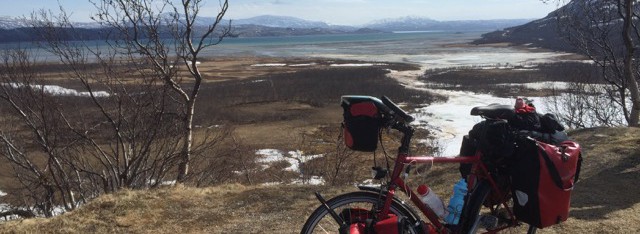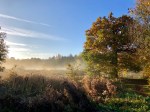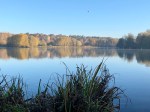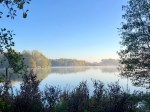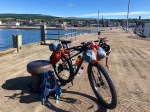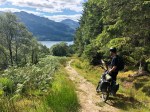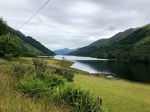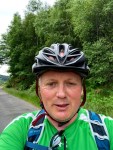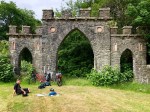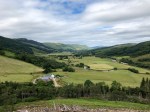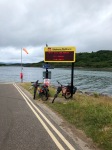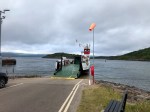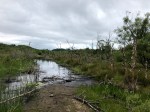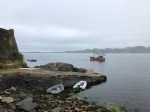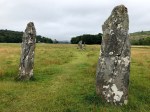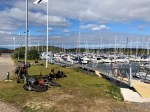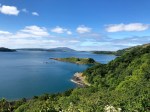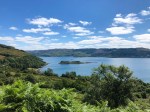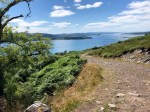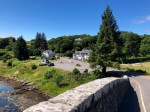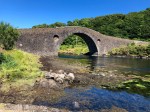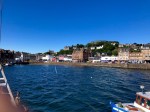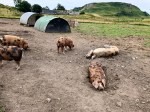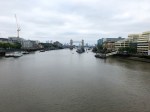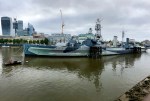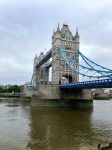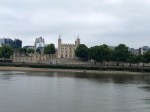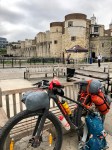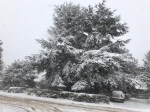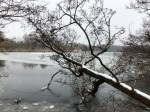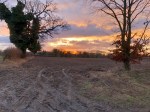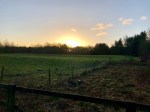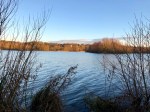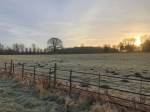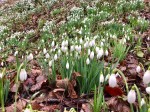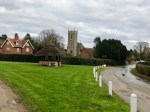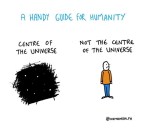I’ll start this post with some autumnal pictures. It’s my favourite time of year, incorporating beautiful colours in the countryside, crisp and bright days, and the Norwich beer festival; always a must visit.
- Mist amongst the Oaks
- The Broad becalmed
- Golden Beech trees
Walking or cycling through the countryside, breathing in the fresh air, is a true delight. And there’s always the joy of jumping into piles of leaves, or taking in a magnificent sunset. I don’t have any recent sunset pictures, as sometimes it’s good just to take it all in without having to photograph it. I do have the privilege to cycle past Whitlingham Broad on my way to work each morning though, which always offers a calm moment before the day starts in earnest.
- A quiet spot
- All the leaves are brown
- Mist on the water
Each year I wonder if we’ll see the same next year. What will have burnt, been blown down, or perished from either drought, habitat destruction or any one of a number of other human caused blights? The wildfires in California, or the increased frequency of ‘once in a hundred years’ storms, are just a few examples.
- Nettles in the year’s first frost
- Path alongside the Broad, early morning
There’s no doubt we’re in the midst of an environmental crisis now. The symptoms of Climate Breakdown are everywhere to see and this is just the beginning. The Intergovernmental Panel on Climate Change, or Climate Breakdown as it should now be called, says we have just 12 years to avert catastrophe. I hope this is true and we’ve not already passed the tipping point.
I’m not going to include lots of links to evidence, to scientific commentary or opinion, as it’s easy to find on the web, however if you have any doubts this is true, or are in denial, I recommend doing a bit of research (I can supply some pointers upon request).
A lot of us have had enough of this now. Of the failure of governments, corporations, and indeed most of the people on the planet, to do anything to avert the impending catastrophe. We are failing future generations of children, and indeed all life on the planet. We can’t however dwell on the past too much, or start blaming previous generations, that won’t help.
For what has probably been several years this has been weighing heavily on my mind, and I’ve experienced a full range of emotions on the subject which I now realise, with the help of friends and wiser people than I, are down to grief. You’d have thought I’d have recognised the symptoms given previous life events. Sadness, a bit of denial, despair and depression, anger, and now hopefully acceptance. You can’t move on and do anything constructive about an issue you’re grieving about unless you can accept it’s happened or happening, and the truth. If you’re going through this yourself I can thoroughly recommend looking up Joanna Macy, the deep ecologist, and the work that reconnects. It helps.
On a side note I’m really starting to think that a lot of the mental health problems we’re seeing at the moment might be related to all of this. At some level, even subconsciously and especially amongst children, are we all recognising the problem and threat? Is this why levels are depression and anxiety are soaring?
Last night I decided to go to a talk organised by Extinction Rebellion. It was a game-changer as far as I’m concerned. The talk was hosted by Rupert Read, a Green Party politician, academic and reader of philosophy at the University of East Anglia where I studied. He gave the same talk at Churchill College in Cambridge recently, and I’d really recommend everyone listen to it, challenge it if necessary, and try to understand it.
https://www.youtube.com/watch?v=uzCxFPzdO0Y
If you do nothing else, or don’t ready any further, please watch at least some of this!
Yes, this stuff is really scary, terrifying. I was beginning to think that very few other people saw it the same way I’ve been seeing it. It makes one feel very alone, and question whether you’re one of the ‘crazies’. I don’t feel that way anymore. They expected maybe 50 odd people to turn up last night. There were around 120 of us crammed into the room, a brilliant turn out given it was only organised the week before. There were people from all walks of life too, lest you think it was just fringe hippies and malcontents. Finally a group of like-minded I can relate to, who are as worried as I am, and who are willing to try to do something about it.
We really do have just years to try do something about this. It’s something that will not just potentially cut your children’s lives short, it could do so for your own life, or at least future wellbeing. As Rupert says in his talk there are three possibilities at the moment.
- Complete breakdown of civilisation, which will start within our lifetimes – there won’t be much of anything left, we didn’t do enough, quickly enough
- An alternative civilisation – a partial collapse of what we have today, but things are left intact to some extent, we just about did enough
- A successor civilisation – we transform our current civilisation now, and quickly, bringing about the chance for massive improvements and a better way of life for all on the planet
I reckon number three is the sensible choice to strive for, if it’s not too late, but it’s also the hardest route to take, and possibly the biggest challenge we’ve faced as a species. To make it work it’ll need everyone to get on board, completely change their lifestyles, and priorities. It’s harder than previous challenges we’ve faced on subjects such as equality, voting rights, and discrimination. We are after all talking about people who are currently rich, comfortable, and enjoying a life of comparative luxury (most people in the UK relative to other parts of the world) needing to set much of what they currently value aside. However, if we can start to transform civilisation we’ll be in with a chance, and we could end up being in a much better place than we are now on many counts.
People may ask isn’t the Paris Climate Change Agreement supposed to avert all these problems? Doesn’t the IPCC report offer hope? The answer to that, in brief, is no. The Paris agreement is effectively burnt, especially if the US pulls out. It doesn’t go far enough and won’t prevent the temperature rises that are going to cause so many problems. These reports and agreements don’t take into account things like feedback loops from ice-melt and the permafrost thawing. If methane emissions soar (releasing the dragon), which is entirely possible, we’ll see the release of massive amounts of a greenhouse gas far worse than CO2.
It would appear therefore we have years to try to fix this, and we need to get as many people involved to completely change the way we live, consume, travel, grow our food, enjoy our leisure activities etc. I’m not sure this is possible but surely it’s got to be worth a go? It really is time for people to wake up to this, for people to start talking about it and for action to start happening on a major scale. And we have to approach this in the right way, not with accusations and trying to force people to see your point of view, but by providing information and the facts, and asking them questions, so they can reach their own conclusions, go through the grieving process, and come out the other side to add a positive contribution. This is much bigger than Brexit, or the NHS crisis, yet it’s not anywhere near the top our governments agenda. They are letting us down.
That’s where Extinction Rebellion comes in (@ExtinctionR)
Governments and corporations aren’t doing anything quickly enough, or anything at all in many cases. They need to start listening and the only way to make that happen appears to be via non-violent direct action, which is what Extinction Rebellion is trying to organise. We need to stop the destructive spiral that is going on at the moment and make change happen.
I’d invite anyone reading this (there’s got to be at least 2 or 3 people who got this far), to check out Extinction Rebellion yourself. Spread the word. Get involved and consider non-violent direct action to make the government listen. There are ‘Holding actions’ we can undertake to slow things down. There’s going to be some good stuff happening in London this weekend. This has the potential to be huge, and even if it doesn’t work I don’t want to be in situation in 10 or 20 years time wishing I’d tried to do something. It’s got to be worth a shot whilst we still have a chance hasn’t it?
In the meantime though, I might do a bit of prepping, just in case…
